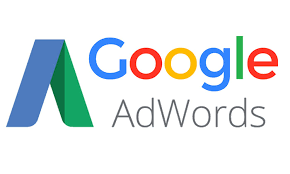
Digital State Consulting discuss the Optimisation of PPC accounts through ad extensions.
This presentation was given in two parts by Sam Owen from Hanapin Marketing and Susan Waldes, recently of 3Q Digital.
The first and most important message was to stress the importance of optimising a campaigns use of ad extensions if it is to compete in the modern PPC environment. Across the board, all extensions have consistently been shown to improve CTR. This is not just for the extension itself but there are also benefits in CTR for the main link it is appended to. Moreover, their mere existence in an account is used by Google to inform improved Ad Rank, thereby driving down click costs and, by extension, improving ROI.
The question is not “should I use Ad extensions?” it is “how can I make the most of them?”
Here are my brief notes taken from the great advice (as always), provided by Sam and Suzy in an hour (apologies in advance to both for truncating or omitting some of their tips and analysis!)
Sitelink extensions
To start the process of optimising your sitelink extensions, firstly consider what options are available. For example, is it plausible (within the sites business model) that different site links could apply at different times of day and week or in relation to specific offers? Secondly, ensure that your sitelinks are optimised to provide the best (additional) solutions for the given campaign/ad group.
How?
As always with PPC, best practice resides in planning, iterative testing and analysis. Sam advocates the creation of six groups of site extensions:
Cross-selling
Brand focus
Specific, macro focus
Company info
Offer driven
Mobile test
With these in place, Google will, (much in the same way as it does with Ad wording) tell you the best over time through the % served metric. Using this data, you can improve and target your sitelinks for maximum benefit.
A concern was raised that some sites (particularly lead generating, rather than retail sites) would not have enough pages of individual value to provide six different site links. Sam’s solution is simple – build them! Identify further incentives you can offer on the SERPs and, using a site like Unbound one can maximise traffic and attract it quickly. As he said, even bad sitelinks are better than none so think innovatively about articulating services and products in different ways.
Additionally, his recommendation was to split out sets of sitelinks for mobile preferred usage. Notwithstanding the potential to more accurately target your mobile market (with store location, for example), Google is clear in valuing the existence of these mobile preferred options. So, if nothing else, ensure that you cut and paste your desktop sitelink extensions and re-apply them with the mobile preference checked. This alone will improve CTR and lower CPC.
Review extensions
Objective data clearly suggests that review extensions improve ad CTR. In addition, the clicks to the review are free, they generally improve conversions, they establish brand trust and they capture real estate on the SERPS.
So why are they so little used?
Well, firstly they are relatively hard to set up, given the parameters set by Google to ensure objectivity. Secondly, and linked to the first point, it can be difficult to obtain legitimate reviews – particularly if you are a smaller brand.
Sam recommends, however, that a full investigation in made to identify opportunity -trust pilot, reseller ratings, which.co.uk, expert reviews and Google trusted stores all offer viable solutions and the results in both short and long term conversions can be substantial.
Dynamic search ads
These ads are written by Google, based on the language used on pages specified by you. On one hand this can be terrifying as you pass management of your advertising wording into the hands of Google. Nevertheless, if you have lots of products with regular changes, this can be a significant boon as these changes will automatically be integrated into the Ads, rather than trawling through all your Ads.
As Sam articulated, it’s like a broad match for landing pages. Similarly to other broad match campaigns, the emphasis needs to be on protecting yourself from irrelevant searches, through diligent use of negative keywords, whilst also mining the data for good long-tail to harvest across to standard campaigns.
Call Extensions help with the Optimisation of PPC accounts
The main benefits of call extensions relate to its good fit with mobile devices, as it offers the most obvious solution for a mobile user, with over 70% of mobile users having used Click to Call functionality. Moreover, it adds significant real estate – particularly on a reduced screen. 45% of mobile users feel it adds brand trust, knowing a site has this support and in line with this emotion phone calls are typically warmer leads, in terms of conversions.
Historically, however, the lack of traceable data has meant call extensions have been distrusted by PPC managers. However, with the advent of Google Forwarding numbers, this problem has been eliminated – indeed, it is arguably that there is now TOO much data!
Now, with data in place, the opportunity to engage with your campaign analytically and iteratively is fully in place and, given the relatively small take up (thus far), there is a competitive edge to be grabbed.
Conclusion
Broadly, ad extensions, whilst generally being used, are not being optimised as much as they could. Given the broad attention to iteration and testing in most Paid Search, this is both surprising and a welcome untapped market. Just push on the door and take advantage, using your standard PPC testing approach along the way.



